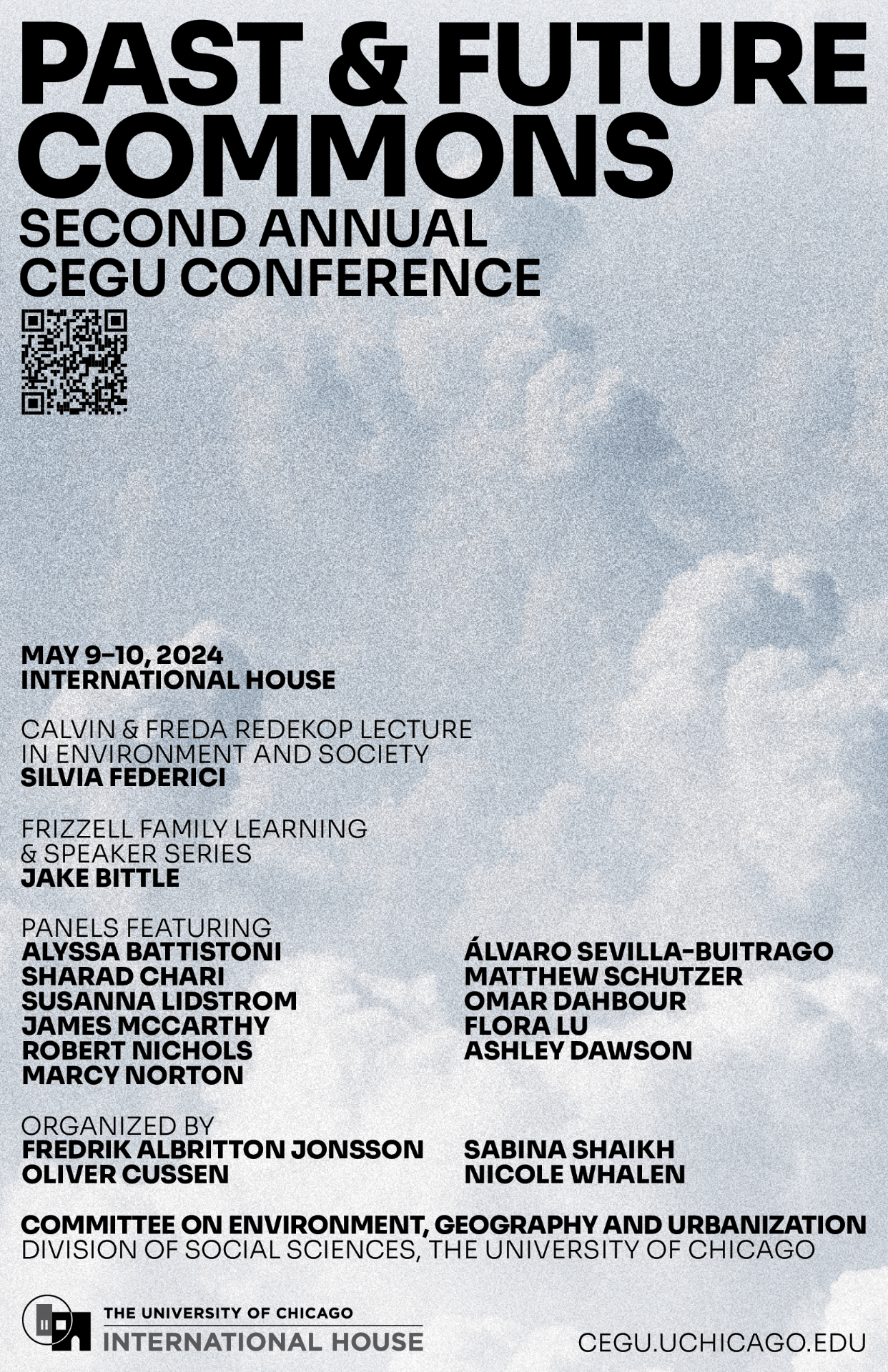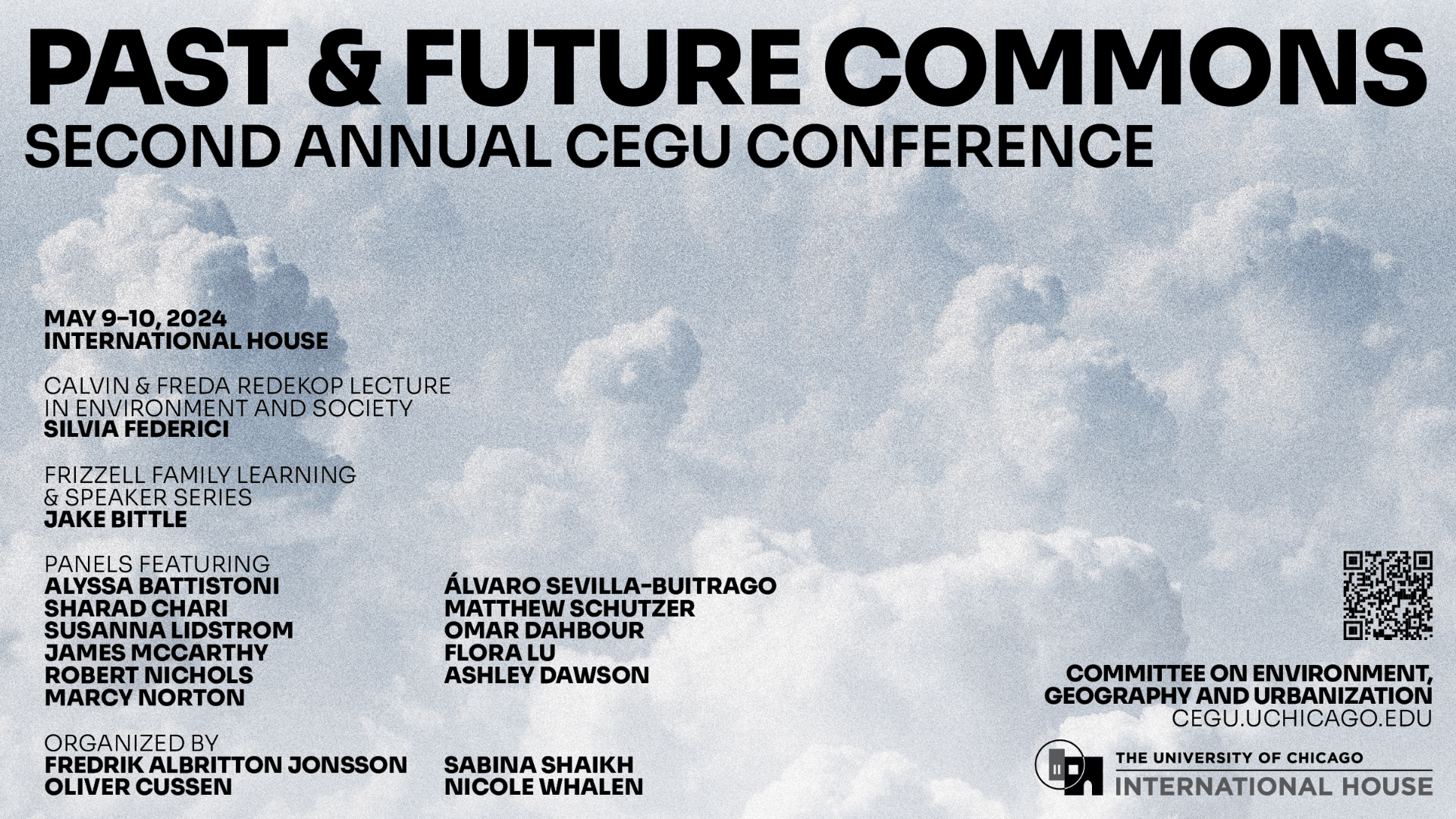Second Annual Conference, Committee on Environment, Geography and Urbanization (CEGU)
Division of Social Sciences, The University of Chicago
May 9–10, 2024 | International House
Register↗
Second Annual Conference, Committee on Environment, Geography and Urbanization (CEGU)
Division of Social Sciences, The University of Chicago
May 9–10, 2024
International House
Register↗
Panel Discussion
Ecological Commons
Moderated by Oliver Cussen
Friday, May 10, 2024, 3:30–4:30pm
International House
The Commons in an Amazonian Context: Conservation, Indigenous Communities, and Care for the Forest.
Flora Lu, University of California, Santa Cruz
Based on longitudinal, cross-cultural research in the Northern Ecuadorian Amazon, in this talk I explore changing conceptualizations of Indigenous stewardship and governance of rainforest ecosystems. This region, considered one of the most biodiverse forests in the world, is also a space where protected areas, Indigenous territories and oil concessions overlap, rendering the establishment and maintenance of commons particularly challenging. In the paper and talk, I will focus on two Indigenous groups — the Waorani and Cofán — and how their pathways navigating such complexity offer insights into critical distinctions between scarcity and abundance, conservation and care.
The Baldío, Livestock, and Dispossession in Spanish America
Marcy Norton, University of Pennsylvania
Though the concept of the “commons” is gaining attention as a model for sustainable and democratic political ecology, its history is also bound up with processes of dispossession. In Spain, baldíos were common lands, rather than private property, available to community members who wanted to collect firewood, forage for wild plants, and graze animals, particularly pigs. In Iberia, the baldio was a land-use category that offered a degree of protection for peasants against otherwise structural inequities. In Spanish-American colonies, the baldío was transformed: baldíos became potential private property for settler ranchers. If settlers demonstrated that lands were not under cultivation, they could convert them into private property for their cattle and sheep. The sequence was often reversed: settlers permitted cows and sheep to occupy and destroy Indigenous milpas fields, and then the settlers claimed that these lands were “vacant” baldíos. The baldío was one of a number of legal constructs and technologies that turned livestock husbandry into a linchpin for the dispossession of Native land, labor, and, sometimes, life.

